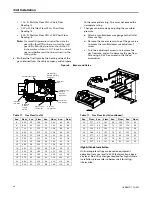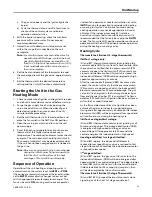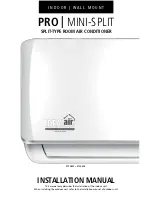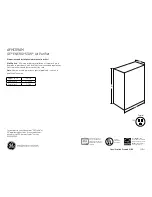
14
18-EB41D1-1A-EN
unit weights are also provided in the unit drawings.
N
No
otte
e:: Unit rigging and hoisting requires accessory
kit BAYLIFT002BA. It includes a kit of four (4)
lifting lugs. See,
2. Insert the four lifting lugs in the openings provided
in the drip lip on each end of the unit. A tap or jerk
to the lug will overcome the interference that arises
due to the dimple on the lug.
3. When hoisting the unit, be sure that a proper
method of rigging is used. Use slings and spreader
bars for protection during lifting. Always test-lift the
unit to determine the exact unit balance and
stability before hoisting it to the installation
location.
4. When the curb and air ducts have been properly
installed, the unit is ready to be hoisted to the roof
and set in position.
IIm
mp
po
orrtta
an
ntt::
•
To prevent damage to the sides and
top of the unit when hoisting, use
"spreader bars" as shown on
.
•
The unit must be lowered into
position. The P.V.C. rubber tape on
the curb flange permits the unit to
be repositioned if required without
destroying the P.V.C. rubber seals
affixed to the mounting curb.
P
Plla
acciin
ng
g tth
he
e U
Un
niitt o
on
n tth
he
e M
Mo
ou
un
nttiin
ng
g C
Cu
urrb
b
1. The unit is designed with a perimeter drip lip that is
lower than the unit base pan, see
.
2. Position the unit drip lip down over and in contact
with the outside corner of the curb. Continue to
lower the unit on top of the curb, with the unit drip
lip astraddle, and in contact with, both the end and
side rail of the curb. The unit should now rest on
top of the curb. Use the extreme mounting kit,
BAYEXMK001A, to add additional hold down
strength to the mounting.
N
No
otte
e:: The ductwork is installed as part of the curb
installation. Do not attach ductwork to the unit
and lower the unit with ductwork onto the curb.
Table 3. Vibration Isolators/Snow Feet Locations
Note:
These views represent the base as
viewed looking up from underneath
the unit.
Important:
Unit requires vibration isolator
support in the general areas
shown. Locate 3/4" thick
vibration isolators on the
bottom of the basepan as
illustrated by black dots for
ground level pad applications.
Modify vibration isolator
location as necessary for frame
and rail applications.
Small Cabinet
****4024 - 4036
Medium Cabinet
****4042 - 4060
Rooftop Installation — Frame
Mounting
For rooftop applications using field fabricated frame
and ducts use the following procedure:
1.
Locate and secure the frame to the roof by bolting
or welding. Frame must provide adequate center
support via a cross member centrally located
channel rail. See,
and
.
Vibration isolators should be installed as indicated
in
, adjust as necessary for your
frame. The isolators must be placed on base pan,
not drip lip. Add flashing as required. Flashing must
conform to local building codes.
2. Prepare the hole in the roof in advance of installing
the unit.
3. Secure the horizontal or down airflow ducts to the
roof. Refer to the previous Convert from Horizontal
Airflow to Down Airflow section if conversion is
needed.
4. All fabricated outdoor ducts should be as short as
possible.
5. Place the unit on the frame.
6. The unit must be mounted level for proper drainage
of water through the holes in the base pan.
7. Secure the unit to the frame.
8. Insulate any ductwork outside of the structure with
at least two (2) inches of insulation and then















































